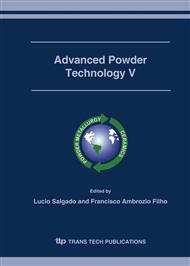p.473
p.478
p.486
p.493
p.499
p.506
p.513
p.520
p.526
Structural Characteristics of the Modern Sintered Tool Materials
Abstract:
Within the project framework the structure and properties was investigated of the cemented carbides, cermets and oxide ceramics using the scanning electron microscope (SEM). The X-ray qualitative microanalysis and surface distribution analysis of elements in the investigated materials were made using the EDS X-ray energy dispersive radiation spectrometer. The roughness measurements of the developed materials were made in two orthogonal directions. The Ra parameter was assumed to be the value describing surface roughness. The microhardness tests using the Vickers method were made on the dynamic ultra microhardness tester. The measurements were made in the „load - unload” mode.
Info:
Periodical:
Pages:
499-504
Citation:
Online since:
November 2006
Authors:
Price:
Сopyright:
© 2006 Trans Tech Publications Ltd. All Rights Reserved
Share:
Citation:


